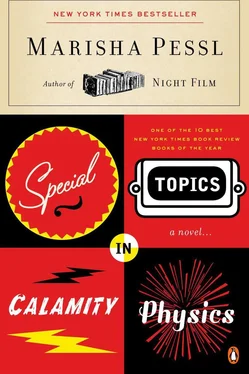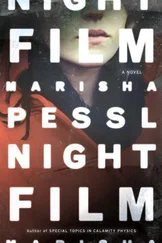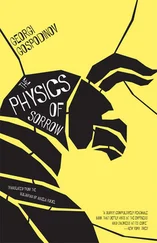“I’m talking about you, ” I said. “You were rude.”
“Rude?”
“Yes. She was nice. I liked her.”
“Someone is not ‘nice’ when they intrude upon your privacy, when they force a landing and take the liberty of discharging radar signals that bounce off your surface, formulating panoramic images of your landscape and transmitting them ceaselessly through space.”
“What about Vera Strauss?”
“Who?”
“Vera P. Strauss.”
“Oh. The veterinarian?”
“Check-out girl in the express lane at Hearty Health Foods.”
“Of course. She wanted to be a veterinarian. I remember.”
“She accosted us in the middle of your—”
“Birthday dinner. At Wilber Steak, yes, I know.”
“Wil son Steakhouse in Meade.”
“Well, I—”
“You invited her to sit down for dessert and for three hours we listened to those awful stories.”
“About her poor brother getting all that psychosurgery, yes, I remember, and I told you I was sorry. How was I supposed to know she herself was a candidate for shock treatment, that we should’ve called those same people who arrive at the end of Streetcar to cart the woman off?”
“At the time I didn’t hear you bemoaning her panoramic images.”
“Point taken. But I remember with Vera, very distinctly, she had an unusual quality. The fact that this unusual quality turned out to be of the Sylvia Plath variety, well, it wasn’t my fault. And at least she was extraordinary on some level. At least she provided us with a raw, uncensored view of complete lunacy. This last woman, this — I don’t even remember her name.”
“Hannah Schneider.”
“Well, yes, she was…”
“What?”
“Commonplace.”
“You’re nuts.”
“I didn’t spend six hours quizzing you on those ‘Far, Far Beyond the SAT’ flashcards for you to use the word ‘nuts’ in everyday speech—”
“You’re outré, ” I said, crossing my arms, staring out the window at the afternoon traffic. “And Hannah Schneider was”—I wanted to think of a few decent words to blow Dad’s hair back—“prepossessing. Yet abstruse.”
“Hmm?”
“You know, she walked by us in the grocery store last night.”
“Who?”
“Hannah.”
He glanced over at me, surprised. “That woman was in Fat Kat Foods?”
I nodded. “Walked right by us.”
He was silent for a moment, then sighed. “Well, I only hope she’s not one of those defunct Galileo probes. I don’t think I could withstand another crash landing. What was her name? The one from Cocorro—”
“Betina Mendejo.”
“Yes, Betina, with the sweet little asthmatic four-year-old.”
“She had a nineteen-year-old daughter studying to be a dietician.”
“Of course,” Dad said, nodding. “I remember now.”
Dad said he’d first heard about the St. Gallway School from a fellow professor at Hicksburg State College, and for at least a year or so, a copy of the school’s shiny 2001–2004 admissions catalogue, breathlessly entitled Higher Learning, Higher Grounds , had been riding around in a box in the back of our Volvo (along with five copies of Federal Forum , Vol. 10, Issue 5, 1998, featuring Dad’s essay, “ Nächtlich : Popular Myths of Freedom Fighting”).
The catalogue featured the proverbial wound-up rhetoric drenched in adjectives, sunny photos filled with bushy autumn trees, teachers with the kind faces of mice and kids grinning as they strolled down the sidewalk holding big textbooks in their arms like roses. In the distance, looking on (and apparently bored stiff) sat a crowd of glum plum mountains, a sky in wistful blue. “Our facilities leave nothing to be desired,” moaned p. 14, and sure, there were football fields so smooth they looked like linoleum, a cafeteria with bay windows and wrought-iron chandeliers, a monster athletic complex that resembled the Pentagon. A diminutive stone chapel did its best to hide from the massive Tudor buildings slouched all over the lawns, structures christened with names like Hanover Hall, Elton House, Barrow and Vauxhall, each sporting a façade that brought to mind early U.S. presidents: gray-topped, heavy brow, wooden teeth, mulish bearing.
The booklet also featured a delightfully eccentric blurb about Horatio Mills Gallway, a rags-to-riches paper industrialist who’d founded the school back in 1910, not in the name of altruistic principles like civic duty or the persistence of scholarship, but for a megalomaniacal desire to see Saint in front of his surname; establishing a private school proved to be the easiest way to achieve this.
My favorite section was “Where Have All the Gallwanians Gone?” which featured a proud blurb written by the Headmaster, Bill Havermeyer (a big old Robert Mitchum type), then went on to summarize the unparalleled achievements of Gallwanian alumni. Rather than the typical boasts of most puffed-up private schools — stratospheric SAT scores, the vast number of seniors who vaulted into the Ivy League — St. Gallway touted other, more extraordinary achievements: “We have the highest number of graduates in the country who go on to be revolutionary performance artists;…7.27 percent of all Gallway graduates in the last fifty years have registered with the U.S. Patent and Trademark Office; one out of every ten Gallway students becomes an inventor;…24.3 percent of all Gallwanians become published poets; 10 percent will study stage-makeup design; 1.2 percent puppetry;…17.2 percent will reside in Florence at some point; 1.8 percent in Moscow; 0.2 percent in Taipei.” “One out of every 2,031 Gallwanians gets into The Guinness Book of World Records . Wan Young, Class of 1982, holds the record for Longest Operatic Note Held…”
As Dad and I sped down the school’s main road for the first time (the aptly named Horatio Way, a narrow drive that teased you through a forest of pin-thin pines before abandoning you at the center of campus), I found myself holding my breath, inexplicably awed. To our immediate left tumbled a lawn of Renoir green, which pitched and swelled so excitedly, it appeared as if it might float away had it not been for the oak trees nailing it to the ground (“The Commons,” sang the catalogue, “a lawn expertly cultivated by our ingenious caretaker, Quasimodo, who some say is the original Gallwanian…”). To our right, chunky and impassive, was Hanover Hall, poised to cross the Delaware under icy conditions. Beyond a square stone courtyard ringed with birch trees sat an elegant auditorium of glass and steel, colossal yet chic: Love Auditorium.
Our intentions were strictly business. Dad and I had come, not only to take a campus tour with Admissions guru Mirtha Grazeley (an elderly woman in fuchsia silk who led us like an old moth in dazed zigzags across the grounds: “Eh, we haven’t seen the art gallery, have we? Oh dear, the cafeteria slipped my mind. And that horse weathervane on top of Elton, not sure if you remember, it appeared in Southern Architecture Monthly last year.”) but also to ingratiate ourselves with the administrator in charge of translating the credits from my last school into the St. Gallway Grading System and hence, determining my class rank. Dad approached this task with the seriousness of Reagan approaching Gorbachev with the Nuclear Forces Treaty.
“Let me do the talking. You sit and look erudite.”
Our target, Ms. Lacey Ronin-Smith, was tucked away in the Rapunzel-like clock tower of Hanover. She was sinewy, salt voiced, and unequivocally dreary haired. Now in her late sixties, she’d served as St. Gallway Academic Chancellor for the past thirty-one years, and, according to the photographs on display around her desk, was keen on quilting, nature hikes with her lady friends and a lapdog sporting more greasy black hair than an aged rock star.
Читать дальше












